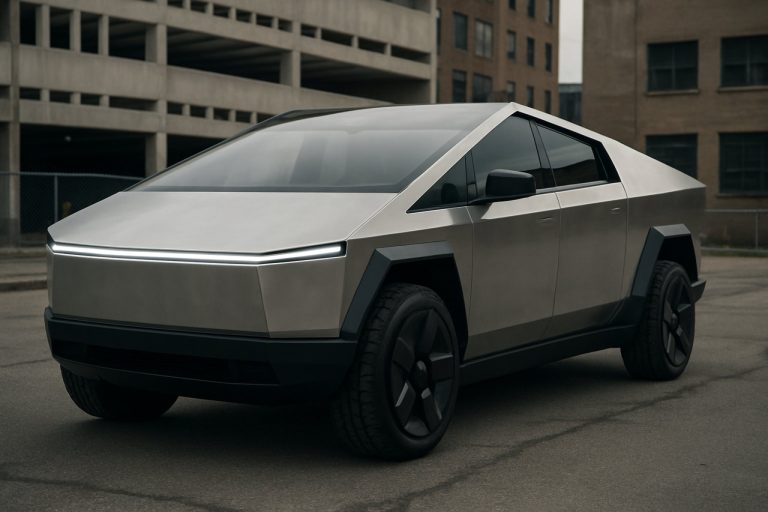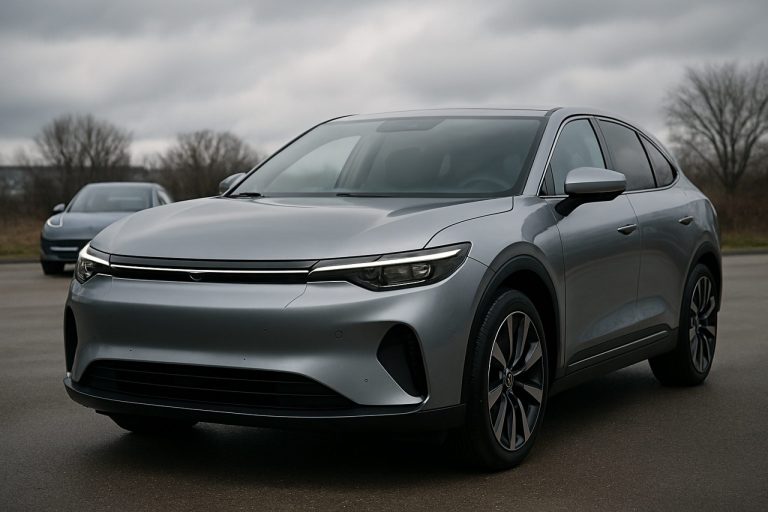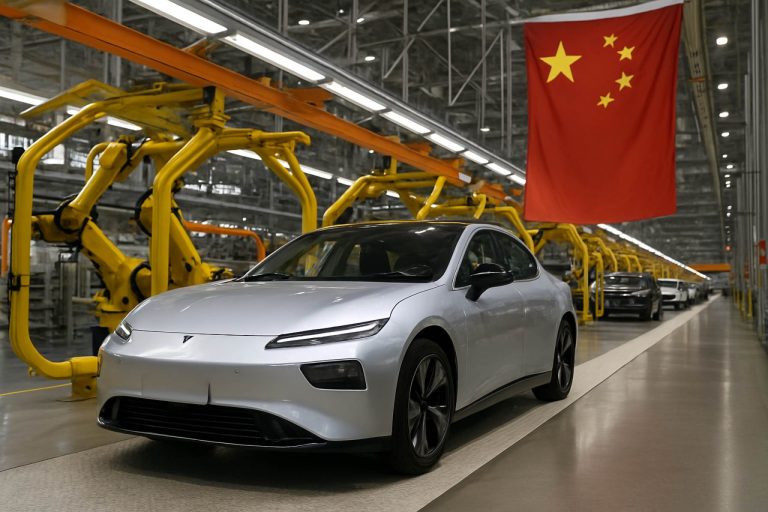
- New South Wales is launching dozens of ultra-fast, renewable-powered EV charging stations across urban and regional areas, enabling rapid charging up to 80% in minutes.
- Major companies like BP, Tesla, NRMA, Plus ES, and Energy Australia are collaborating to build accessible EV infrastructure, with features for drivers with disabilities and those towing large vehicles.
- Public engagement is high, with educational workshops and showcases helping drivers gain confidence in electric vehicle reliability and range.
- NSW is investing in public transport electrification, ordering 319 battery-electric buses from leading manufacturers to enhance sustainable commuting.
- Strategic, science-based policies and record-setting kerbside charger rollouts position NSW as a national leader in clean mobility and climate action.
An ambitious spark now arcs across New South Wales as the state surges ahead with an electrifying pledge: dozens of ultra-fast chargers, powered exclusively by renewable energy, will soon dot its urban and regional landscapes. The labyrinthine trunks of Sydney, the sun-glossed driveways of the Central Coast, the valleys around the Blue Mountains—all stand to witness a fundamental shift, as EV owners are promised the ability to refuel from nearly empty to 80 percent in less time than it takes to enjoy a cup of coffee.
Backed by household names—BP, Tesla, NRMA, Plus ES, and Energy Australia—the new pulse of infrastructure brings more than speed. Designed with inclusion as a core principle, these stations will provide accessibility for everyone. Wider bays, barrier-free pathways, and specialized support aim to ensure drivers with impaired mobility, families towing caravans, and those hauling boats or trailers experience charging with dignity and ease.
Public enthusiasm buzzed this weekend as families mingled with early adopters and climate advocates at a statewide EV showcase. Storytelling and hands-on workshops demystified charging technologies, helping drivers shed lingering anxieties about range and reliability. Children clambered through displays in bright anticipation—not just of quiet cars, but of a quieter, less polluted future.
The commitment extends beyond private vehicles. The government’s order of 319 battery-electric buses cements New South Wales as a leader in public transport innovation. Leading manufacturers—Volvo, Yutong, Custom Denning, and Foton Mobility—are now preparing fleets that will redefine school runs and daily commutes. Earlier milestones include a national record: the most extensive rollout of kerbside EV chargers ever seen in Australia.
This momentum underscores something larger: climate action is no longer a political slogan, but tangible progress etched into the daily life of New South Wales. The state’s policymakers have embedded science-driven standards and sustainable procurement into every facet of their electrification plan, mirroring global leaders in clean mobility.
Key message: The future of Australian transport is charging forward—with climate friendliness, accessibility, and speed as its guiding lights. As New South Wales rewires its roads, the drive towards zero emissions gathers real-world velocity, inviting motorists to travel further and cleaner than ever before.
For more about the state’s green initiatives and EV infrastructure, visit NSW Government.
New Era for Australian EVs: How NSW’s Ultra-Fast Charging Network Will Shape the Nation’s Green Future
Introduction
New South Wales (NSW) is spearheading Australia’s boldest shift toward clean and inclusive transport with the launch of dozens of ultra-fast, renewably powered EV charging stations. While the original article spotlighted this transformative move, a deeper dive reveals crucial additional facts, potential challenges, industry trends, and actionable tips that every driver, policymaker, and business owner in Australia needs to know.
—
Key Additional Facts & Insights (Beyond the Source Material)
1. Technical Specs & Performance
– Charging Speeds: Most “ultra-fast” chargers deliver between 150 kW to 350 kW, enabling compatible EVs to charge from 10%–80% in 15–30 minutes (source: [Tesla](https://www.tesla.com), [EVDatabase.org](https://www.ev-database.org)). This rapid rate is over ten times faster than most home chargers.
– Connector Types: NSW’s stations will accommodate both CCS2 and CHAdeMO standards—catering to nearly all mainstream electric vehicles sold in Australia (source: [NRMA](https://www.mynrma.com.au)).
– 100% Renewable Energy: These charging locations will be supplied exclusively by wind, solar, or hydro power through green energy procurement and on-site solar panel installations when possible.
2. How-To: Using an Ultra-Fast Charger
1. Locate a Station: Find the nearest charger via your car’s navigation or apps like PlugShare or Chargefox.
2. Connect Your Vehicle: Select the correct cable type (CCS2 or CHAdeMO).
3. Authenticate: Use RFID cards, smartphone apps, or tap-and-go payments.
4. Monitor Progress: Most chargers display time-to-80% and price in real-time.
5. Unplug and Go: For courtesy, move your car once charging completes.
3. Accessibility & Inclusion
– Accessible Design: Stations feature wide bays, tactile paving, lowered controls, and barrier-free paths—meeting or exceeding standards set by the Disability Discrimination Act 1992 (DDA).
– Vehicle Diversity: Spaces are oversized to support caravans, trailers, or wheelchair-accessible vans—accommodating diverse user needs.
4. Broader Impact: Market Forecasts & Trends
– EV Uptake Soaring: The Electric Vehicle Council reports Australian EV sales tripled in 2023, with over 120,000 EVs sold year-to-date. NSW is now the fastest-growing EV market in the country.
– Public Buses as Game Changer: The 319 electric bus order is Australia’s largest. Early pilot routes in Sydney have cut local emissions by up to 80% and noise pollution by half.
– Private Sector Momentum: Major partnerships (BP with Tesla, NRMA, Plus ES, and Energy Australia) reflect a private-public ecosystem, setting a national template for green investment.
5. Reviews & Comparisons
– Key Players Compared:
– Tesla Supercharger: Exclusively ultra-fast (250–350 kW), seamless for Tesla owners, now open to non-Tesla EVs in select regions.
– BP Pulse/NRMA Ultra: Known for network reliability, broad compatibility, and 100% renewable sourcing.
– Chargefox: Australia’s largest public network, also expanding rapidly in NSW.
– User Reviews: Most drivers praise speed and convenience, though some complain about network reliability and charger congestion—especially during holidays.
6. Controversies & Limitations
– Grid Strain: Some energy experts warn large-scale ultra-fast charging could challenge local grid capacity if not sequenced intelligently or supported by battery storage (source: [Energy Networks Australia](https://www.energynetworks.com.au)).
– Charger Availability: Demand outstripping supply in remote regions remains a concern. There is also a “charging etiquette” problem—drivers sometimes overstay, blocking access.
– Cost per kWh: Ultra-fast charging is typically costlier than home charging—sometimes rivaling petrol prices on a per-kilometre basis.
7. Security & Sustainability
– Cybersecurity: New stations employ end-to-end encryption to prevent hacking or data breaches (source: [Australian Cyber Security Centre](https://www.cyber.gov.au)).
– Circular Economy: Procurement policies now require manufacturers to recycle old chargers and minimize e-waste.
—
Pressing Questions Answered
1. Will “ultra-fast” charging degrade my EV’s battery faster?
Regular use of very high-speed charging can marginally accelerate battery wear due to heat, though most modern EVs have sophisticated thermal management. Occasional use (e.g., highway travel) is considered safe by leading automakers (source: [Tesla](https://www.tesla.com), [Hyundai](https://www.hyundai.com/au/en)).
2. How can I find a reliable charger, especially when traveling to rural NSW?
Official apps like PlugShare, Chargefox, and most car manufacturers’ own navigation systems offer real-time station status, enabling route planning and minimizing downtime. NSW’s new network is designed to fill gaps along major intercity and tourist routes.
3. What’s the average cost to “fill up” with electricity at these stations?
Current NSW ultra-fast networks charge between $0.40–$0.60 per kWh. Charging a 60 kWh battery from 10% to 80% would cost $17–$25, delivering 300–400 km of range—significantly cheaper than petrol (source: [NRMA](https://www.mynrma.com.au)).
4. How do these initiatives compare globally?
NSW is now on par with world leaders like California, Germany, and Norway in terms of network density, speed, and renewable energy commitment.
—
Actionable Recommendations & Life Hacks
– Plan Ahead: Always map charging stops on long journeys using dedicated EV apps for seamless travel.
– Join a Network: Sign up for NRMA or BP Pulse charging programs to access discounts and exclusive member benefits.
– Maximize Battery Life: Use ultra-fast charging mainly for long trips and regular AC (slower) charging for day-to-day use.
– Smart Timing: Charge at off-peak hours when electricity prices and station queues are lower.
– Advocate for More: Encourage your local council or workplace to adopt public and fleet charging solutions, supporting a faster transition for all.
—
Conclusion
New South Wales isn’t just “installing chargers”—it’s laying the foundational grid for a cleaner, smarter, and more accessible future. The synergy of fast, green energy, inclusive design, and public-private collaboration sets a new national benchmark for sustainable transport. Expect other Australian states to follow suit, and for EV ownership to become not just mainstream, but practical and enjoyable for everyone.
Stay tuned to the NSW Government website for the latest updates, and start planning your next adventure on Australia’s next-generation roads.
—
Keywords: EV charging stations, renewable energy, ultra-fast chargers, New South Wales, electric vehicles Australia, public transport innovation, sustainable mobility, green infrastructure, accessibility, market trends



